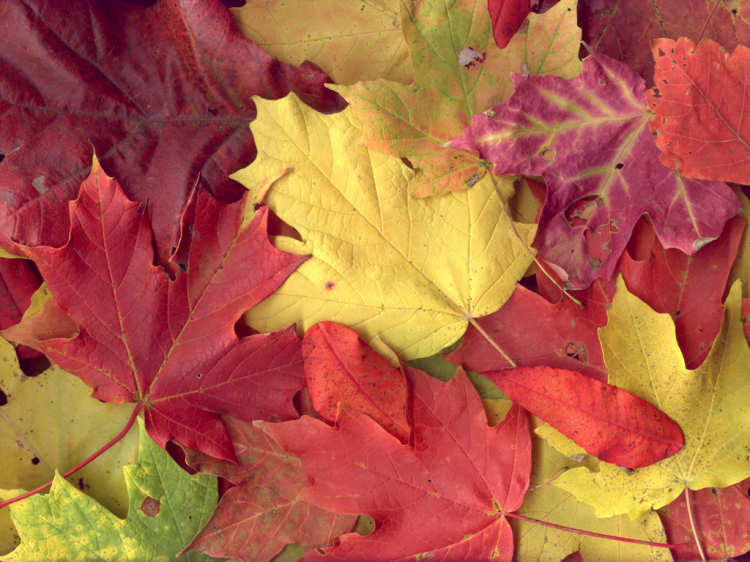Why autumn leaves are red in America and yellow in Europe
 Washington, August 14 : Scientists are studying environmental conditions 35 million years ago to solve the mystery that why autumn leaves are red in America and yellow in Europe.
Washington, August 14 : Scientists are studying environmental conditions 35 million years ago to solve the mystery that why autumn leaves are red in America and yellow in Europe.
The green of a tree's leaves is from the larger proportion of the chlorophyll pigment in the leaves.
The change in color to red or yellow as autumn approaches is not the result of the leaves' dying, but of a series of processes - which differ between the red and yellow autumn leaves.
When the green chlorophyll in leaves diminishes, the yellow pigments that already exist become dominant and give their color to the leaves.
Red autumn leaves result from a different process: As the chlorophyll diminishes, a red pigment, anthocyanin, which was not previously present, is produced in the leaf.
These facts were only recently discovered and led to a surge of research studies attempting to explain why trees expend resources on creating red pigments just as they are about to shed their leaves.
Explanations that have been offered vary and there is no agreement on this as of yet.
According to the theory provided by Professor Simcha Lev-Yadun of the Department of Science Education- Biology at the University of Haifa-Oranim and Professor Jarmo Holopainen of the University of Kuopio in Finland, until 35 million years ago, large areas of the globe were covered with evergreen jungles or forests composed of tropical trees.
During this phase, a series of ice ages and dry spells transpired and many tree species evolved to become deciduous.
Many of these trees also began an evolutionary process of producing red deciduous leaves in order to ward off insects.
In North America, as in East Asia, north-to-south mountain chains enabled plant and animal `migration' to the south or north with the advance and retreat of the ice according to the climatic fluctuations. Along with them migrated their insect `enemies' too.
Thus, the war for survival continued there uninterrupted.
In Europe, on the other hand, the mountains - the Alps and their lateral branches - reach from east to west, and therefore no protected areas were created.
Many tree species that did not survive the severe cold died, and with them the insects that depended on them for survival.
At the end of the repeated ice ages, most tree species that had survived in Europe had no need to cope with many of the insects that had become extinct, and therefore no longer had to expend efforts on producing red warning leaves, thus becoming yellow in color over time. (ANI)